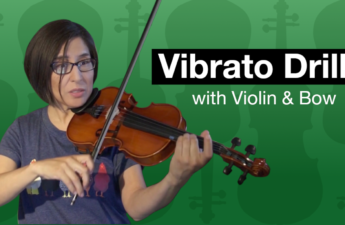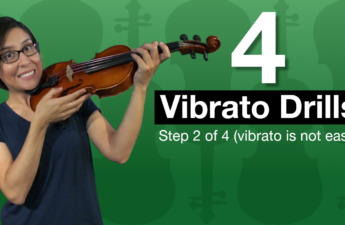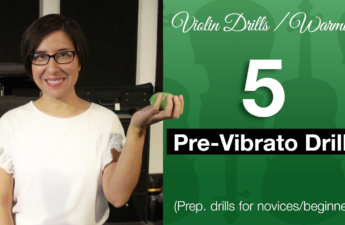I highly recommend practicing the E Natural scale along with the G Major scale. They both use the same exact notes. The only difference is that you start with your first finger on the d string to begin with your first E natural note. The rest of the octave is just the same as the G Major scale! To get a little more insight on how to practice G major 2 octave scale, lets review the details….
Pre Requisites:
- Make sure all of your strings are in tune.
- I recommend you learn the A and D major one octave scale and the G major 2 octave scale. You can check out my previous blogs regarding those scales, and once you learn those scales come back to learn the 1 octave E Natural/Minor scale.
- By now you should already be accustomed to playing with all four fingers. All my explanations and demos will assume that you practice your scales with all four fingers. If you are not yet at that stage, you can play the open strings that replace the notes that are played with the fourth finger.
Let’s start off by reviewing which notes to hit on the violin to get the E Natural/Minor, 1 Octave Scale:
- Start with your first finger on the D string to hit your first E natural note
- Second finger be placed a whole step down and will hit F#
- Third finger will go down a half step to hit G
- Fourth finger will go a whole step down to hit D
- Then shift your first finger to the right to hit B on the A string
- Second finger will go down a half step to hit C Natural
- Stretch your third finger a whole step down to hit D
- Fourth finger will take another a whole step down to hit your final note, E natural
First learn to play this scale by using all four fingers and single well-controlled and slow bow strokes. Then step it up by practicing with bow slurs. I start off with playing 2 notes per one bow stroke.
Now lets go over the arpeggio for the E Natural/Minor scale:
- Play E natural (first finger on the D string),
- Third finger on the D string to hit G
- First finger on the A string will hit B
- And last, fourth finger on A to hit your final E natural note
My beginner to beginner bonus tip for learning this arpeggio is to be mindful of the relationship between the positions of the fingers as you cross the strings. You can do this by “finger gluing”. For example, in the second half of the arpeggio when you hit B, your next note will be your third finger on the A string which is D. You can keep your first finger down on A (the B note) as you continue to play the last G note which is second finger on E. Continue gluing down your B note as you play back D on A, B and G on D. After that, keep your fingers close to the strings to mark the distances between the current note and the next note. This will give you a better chance to hit the right pitch every time.
I use the E natural scale to refine my intonation. This scale along with the G major two octave scale has been so useful in practicing getting used to hitting C natural with my half stepped second finger. What I do is place my first finger down before placing the second finger to hit C. It gives me a rough guide to play my C natural note.
So there you have it, the E natural one octave scale and arpeggio, I hope this helps you out in your violin journey. I just have one more beginner scale left to conclude the grade 1 scales – which is the C major one octave scale. So please make sure you check back for that next blog post – in about a few weeks.
If you’re interested a reference track for the E Natural/Minor scale, click the following link below to download the MP3 file from my Patreon page. And yes, it does require a 1 dollar donation for all downloads.
Get the G Major, 2 Octave Scale Piano Track
I hope this has been insightful!


